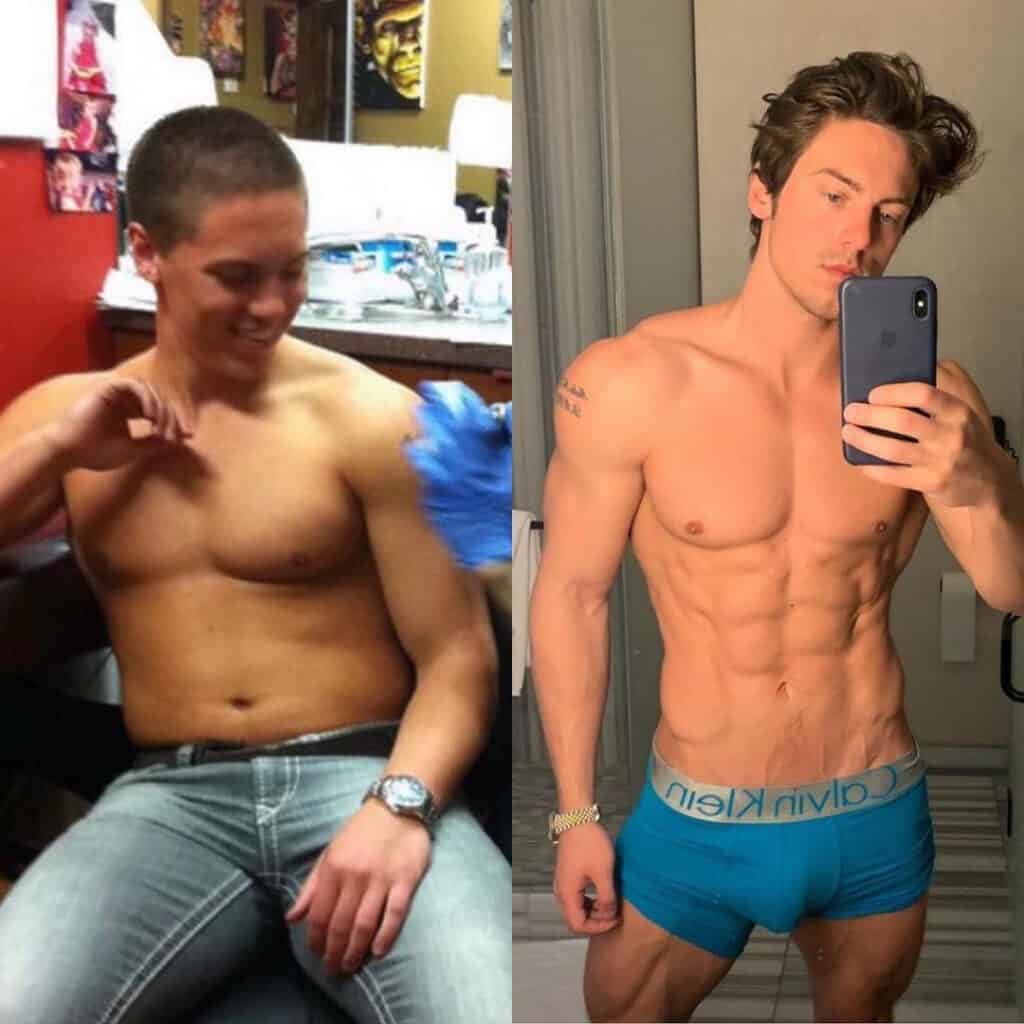If you have been keeping up with Kinobody for some time, then you know we aren’t big proponents of cardio. In fact, we think traditional cardio absolutely sucks. What about HIIT, though? Many advanced athletes perform HIIT and swear by it for its supposed and superior fat burning effects over traditional cardio. We’ll share our thoughts and what we think about this workout style.
What Is HIIT Training?
For those unfamiliar, HIIT stands for high-intensity interval training. With regular cardio, you may run at a moderate and consistent pace for 30 to 40 minutes. With HIIT cardio, however, you do multiple rounds of high intensity training followed by brief resting periods before resuming the high pace.
An example of this training regimen may include one-minute rounds of all-out sprints where you just blaze it as fast as you can. This may be followed by 20 to 30-second rests before starting another round. You might do anywhere from five to 10 rounds. During the resting period, you may rest or simply jog at a moderate pace.
You can also switch up the exercises; any exercise is fine as long as it allows you to train at an extremely high volume. HIIT workouts may also consist of burpees, box jumps, or whatever has you gasping desperately for air within a short interval.
Just search for it on YouTube, and you’ll find dozens upon dozens of HIIT workouts for beginners and advanced trainers.
That is HIIT for you in a nutshell right there.
Is HIIT Cardio Effective for Fat Loss?

HIIT advocates swear by it, often saying it’s leaps and bounds better than traditional cardio. Is there any merit behind this? More importantly, what does the science say about it?
HIIT lovers stand by it because of its supposed excess post-exercise oxygen consumption (EPOC), or afterburn effect. EPOC is the temporary boost in metabolism after a cardio workout, allowing you to burn more calories at an accelerated rate even after your training session. HIIT advocates are mainly in it for the afterburn effects, which some believe helps you burn up to an additional 1,000-calories over the next 24-hours.
We would be the first on the HIIT bandwagon if it was indeed that effective. Unfortunately, science just doesn’t support the crazy afterburn effects of HIIT.
What the Study Reveals About HIIT
Here’s the cold-hard truth: In a 2006 study comparing HIIT to regular endurance training, the results revealed that HIIT did indeed have greater EPOC effects, but not by much. The endurance group saw about a 7% EPOC, while the HIIT group saw 13%.
Sure, that’s better than regular cardio, but the overall effect still really isn’t significant enough to result in major calorie expenditure.
Here’s a way of looking at it: if you were to burn, say, 300 calories from a HIIT workout itself, then you would only burn an additional 13% of that from the afterburn, which comes down to an additional 40 measly calories. You would completely nullify those 40 calories by eating a single Oreo cookie.
So, HIIT Is Useless?
We wouldn’t say HIIT is worthless, though it certainly isn’t the answer if you’re trying to achieve optimal weight loss. The workout does have you panting hard, so it’s actually useful for athletes who need to increase their stamina and conditioning. You may also do HIIT if for some reason you just absolutely love cardio and find it addicting. We know for a fact, though, that this isn’t the majority of people.
Why force yourself to do something that you loathe if it isn’t significantly impacting the results you’re passionately after?
What Is the Best Method Then for Fat Loss?

It’s all about hitting your nutritional numbers. Eat less than your body burns. This doesn’t mean starving yourself by following one of those crazy crash or keto diets. You just need to eat about 500 calories below maintenance. Remember, maintenance level is your bodyweight multiplied by 15.
In addition, you should also be sure you’re getting enough protein. By “enough,” we don’t mean 1.5 to two grams per bodyweight as is often preached in bodybuilding circles. That’s just a sham to get you to buy overpriced whey protein supplements. You don’t need more than .8-grams per bodyweight. Even slightly less is acceptable. You should also be sure to get plenty of carbs, since the macronutrient is protein-sparing.
Finally, don’t forget to maintain a low-volume strength training regimen to help preserve muscle mass. If fat loss is your main goal, then we recommend either the Warrior Shredding Program or Aggressive Fat Loss Program.
That’s all there is to it for fat loss. Eat the right number of calories, maintain the right protein/carb ratios, commit to a tri-weekly strength training program, and you’re all set. Notice that we didn’t mention anything about cardio.
Take a Brisk Walk In lieu of HIIT Cardio

To accelerate the fat loss, we do recommend walking for about 45 to 60 minutes whenever time permits. We don’t consider this an exercise, much less cardio. A walk at a brisk pace for an hour covers about three miles. You also burn about 5-calories per kilogram of bodyweight. If you weigh 80-kilograms (176 pounds), then you burn about 400-calories.
Sure, with HIIT, you’ll burn more calories in less time, but it’ll also wear you out. Most people also dread cardio instead of enjoy it.
Plus, walking is also casual enough that you can multi-task. While getting in those steps, why not also listen to a podcast on a topic of interest? We recommend Road to Ripped, starring Kinobody’s Greg O’Gallagher and Truth Nutra’s Christopher Walker. There’s a ton of valuable content and information. When you listen to it, you’ll see how all the Kinobody principles fall into place.
Final Note
We know it’s hard to believe that you can achieve six-pack abs with zero cardio or high-intensity interval training. Many everyday people on the Kinobody program, though, have done just that.
Before you go, please take five minutes to complete the Kinobody survey. By answering a few questions, we can recommend a program that is right for your body type and goals. We can determine whether you’re better off on a muscle-building routine like our Superhero Bulking Program or more suited for an effortless fat loss regimen.





